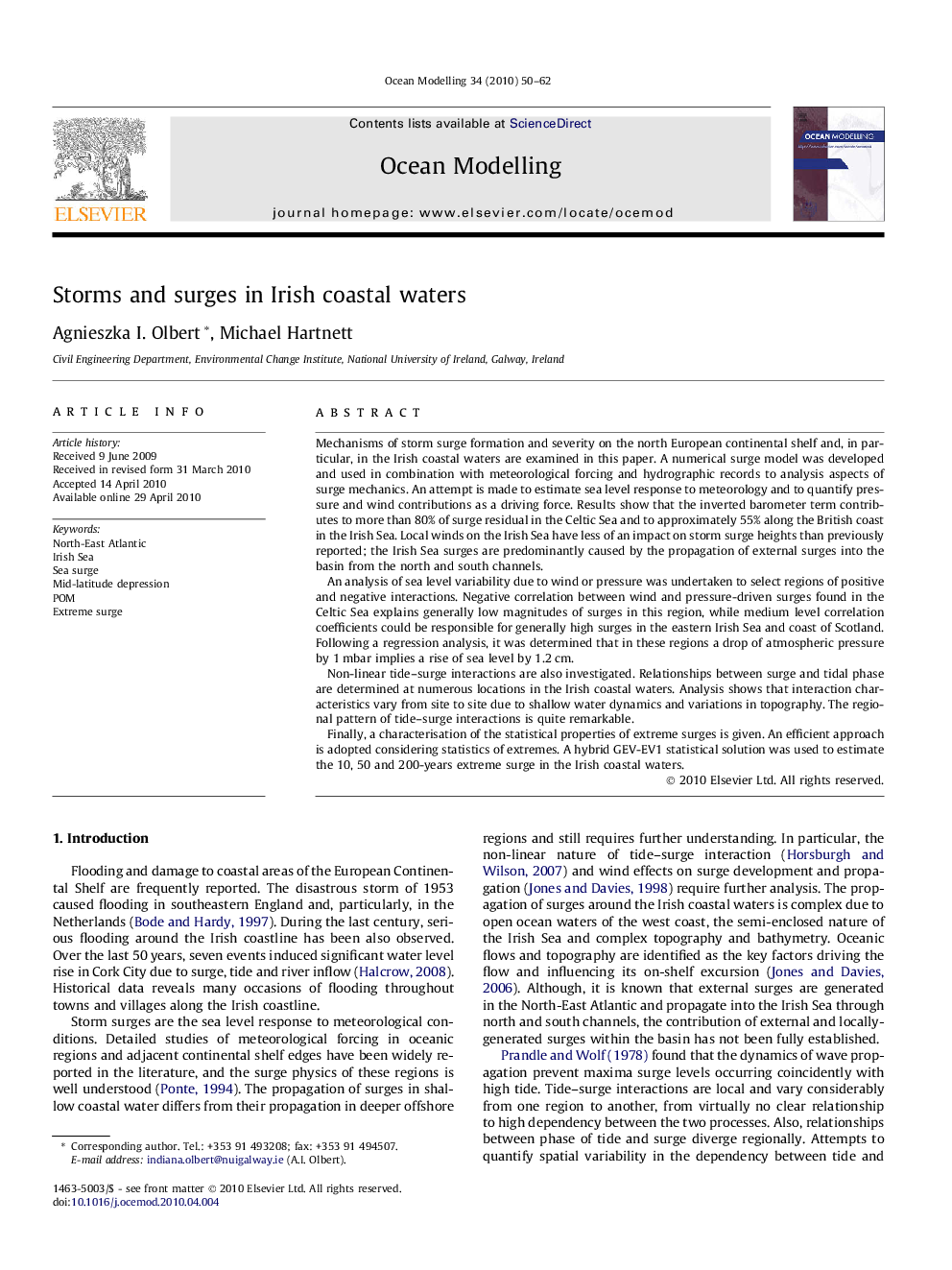| Article ID | Journal | Published Year | Pages | File Type |
|---|---|---|---|---|
| 4552334 | Ocean Modelling | 2010 | 13 Pages |
Mechanisms of storm surge formation and severity on the north European continental shelf and, in particular, in the Irish coastal waters are examined in this paper. A numerical surge model was developed and used in combination with meteorological forcing and hydrographic records to analysis aspects of surge mechanics. An attempt is made to estimate sea level response to meteorology and to quantify pressure and wind contributions as a driving force. Results show that the inverted barometer term contributes to more than 80% of surge residual in the Celtic Sea and to approximately 55% along the British coast in the Irish Sea. Local winds on the Irish Sea have less of an impact on storm surge heights than previously reported; the Irish Sea surges are predominantly caused by the propagation of external surges into the basin from the north and south channels.An analysis of sea level variability due to wind or pressure was undertaken to select regions of positive and negative interactions. Negative correlation between wind and pressure-driven surges found in the Celtic Sea explains generally low magnitudes of surges in this region, while medium level correlation coefficients could be responsible for generally high surges in the eastern Irish Sea and coast of Scotland. Following a regression analysis, it was determined that in these regions a drop of atmospheric pressure by 1 mbar implies a rise of sea level by 1.2 cm.Non-linear tide–surge interactions are also investigated. Relationships between surge and tidal phase are determined at numerous locations in the Irish coastal waters. Analysis shows that interaction characteristics vary from site to site due to shallow water dynamics and variations in topography. The regional pattern of tide–surge interactions is quite remarkable.Finally, a characterisation of the statistical properties of extreme surges is given. An efficient approach is adopted considering statistics of extremes. A hybrid GEV-EV1 statistical solution was used to estimate the 10, 50 and 200-years extreme surge in the Irish coastal waters.
